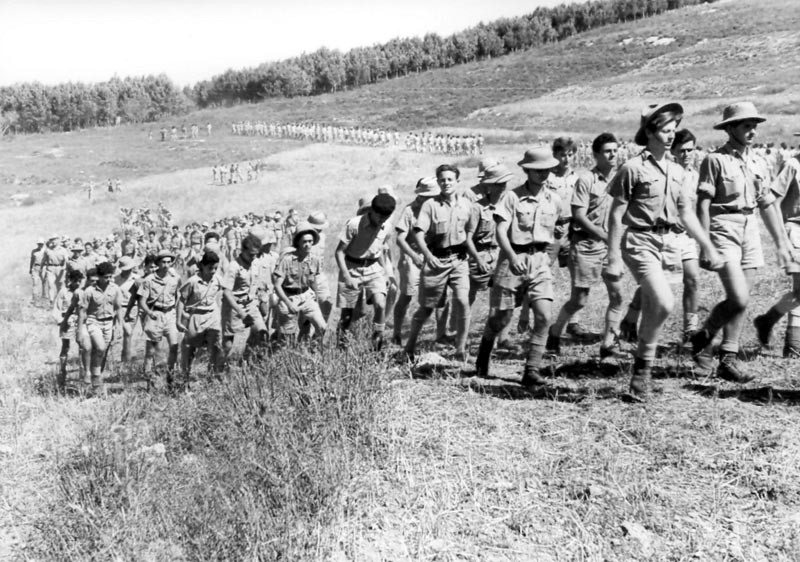The Palmach’s gatherings
The Palmach’s gathering were an important part of its evolving cultural tradition and folklore and represented important landmarks commemorating the Palmach experience for its members. This tradition began with the gatherings of the companies in the Palmach’s first two years. The companies’ size and the fact that their members were scattered in the various camps and farms created the need for an occasional national gathering of all the Brigade’s men. All together, the Palmach held three gatherings.
The Palmach’s gathering were an important part of its evolving cultural tradition and folklore and represented important landmarks commemorating the Palmach experience for its members. This tradition began with the gatherings of the companies in the Palmach’s first two years. The companies’ size and the fact that their members were scattered in the various camps and farms created the need for an occasional national gathering of all the Brigade’s men. All together, the Palmach held three gatherings.
The first national Palmach gathering was held on the 12th and 13th of May 1944 in a grove near Kibbutz Mishmar Hae’mek, when the Brigade was three years old. At that time the Palmach constituted of seven infantry companies, two beach guard companies and a staff company. The second national Palmach gathering was held two months after the Second World War ended, on the 20th and 21st of July by Nahal Harod (Harod River) in the Kibbutz’s olive grove. Beyond its uniting force, the gatherings probably served to convince the Zionist leadership of the need the Hebrew settlement had in an active armed resistance against England.
During the War of Independence the Palmach’s units fought in all fronts and clearly were not able to hold a national gathering. In the spring of 1949 began the process of dispersing the brigades and releasing their men. Like other units in the I.D.F who held farewell and summarizing ceremonies, the members of the Palmach’s three Brigades (whose headquarters was already dispersed in November 1948) planned a national gathering. The Ramatkal (head of general headquarters), under the influence of the prime minister and minister of defense, Ben Gurion, who considered the gathering an act of protest against the dispersing of the Palmach, gave an order forbidding the regular I.D.F’s soldiers to participate in its gathering, under the pretension that soldiers were not allowed to participate in assemblies of military nature. Despite the prohibition the opening ceremony of the Palmach’s gathering which was held in Tel Aviv on the 14th of October 1949, included more than twenty five thousand participants, many of them were once Palmach members and now in the regular army.
The first national Palmach gathering was held on the 12th and 13th of May 1944 in a grove near Kibbutz Mishmar Hae’mek, when the Brigade was three years old. At that time the Palmach constituted of seven infantry companies, two beach guard companies and a staff company. The second national Palmach gathering was held two months after the Second World War ended, on the 20th and 21st of July by Nahal Harod (Harod River) in the Kibbutz’s olive grove. Beyond its uniting force, the gatherings probably served to convince the Zionist leadership of the need the Hebrew settlement had in an active armed resistance against England.
During the War of Independence the Palmach’s units fought in all fronts and clearly were not able to hold a national gathering. In the spring of 1949 began the process of dispersing the brigades and releasing their men. Like other units in the I.D.F who held farewell and summarizing ceremonies, the members of the Palmach’s three Brigades (whose headquarters was already dispersed in November 1948) planned a national gathering. The Ramatkal (head of general headquarters), under the influence of the prime minister and minister of defense, Ben Gurion, who considered the gathering an act of protest against the dispersing of the Palmach, gave an order forbidding the regular I.D.F’s soldiers to participate in its gathering, under the pretension that soldiers were not allowed to participate in assemblies of military nature. Despite the prohibition the opening ceremony of the Palmach’s gathering which was held in Tel Aviv on the 14th of October 1949, included more than twenty five thousand participants, many of them were once Palmach members and now in the regular army.


